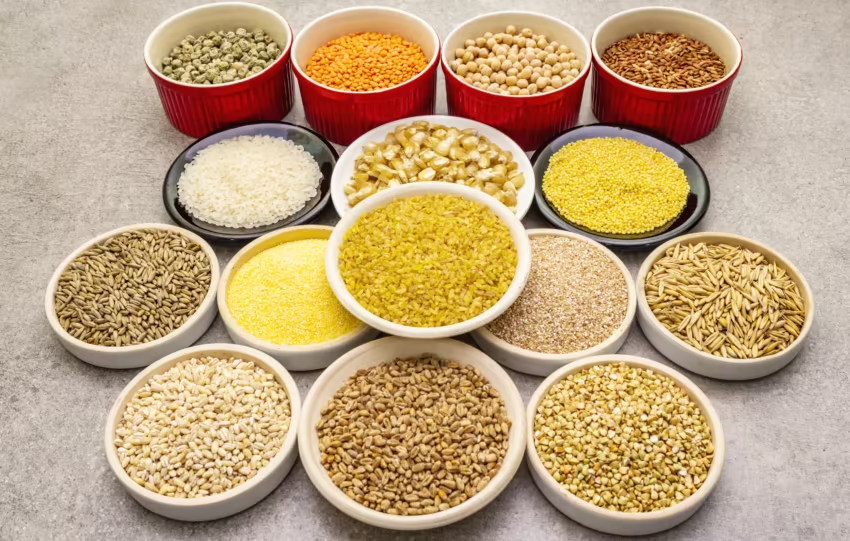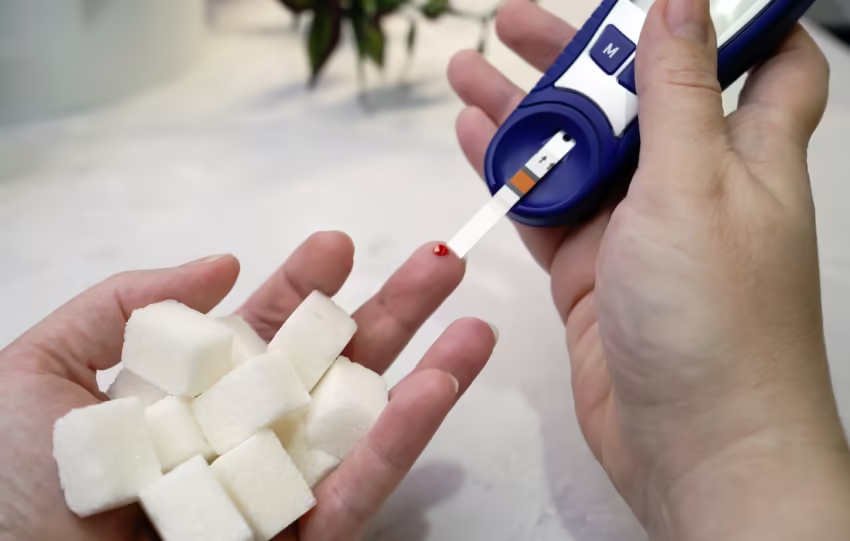Carbs as Energy Powerhouses: Their Role in Physical Performance
Carbohydrates are the unsung heroes of physical performance, serving as the primary fuel for muscles, brain, and vital organs during exercise. Whether you’re a professional athlete, a weekend warrior, or someone aiming to stay active, carbohydrates provide the energy needed to power through workouts, recover effectively, and optimize performance. Despite their critical role, misconceptions about carbohydrates—often fueled by low-carb diet trends—have led to confusion about their importance. This article explores the science behind carbohydrates, their metabolic pathways, and their indispensable role in enhancing physical performance. By diving into evidence-based insights, we aim to equip readers with the knowledge to harness carbohydrates for peak athletic and fitness outcomes.
Understanding Carbohydrates: The Body’s Preferred Fuel
Carbohydrates are organic molecules composed of carbon, hydrogen, and oxygen atoms, typically in a 1:2:1 ratio, with the general formula (CH₂O)n. As one of the three macronutrients—alongside proteins and fats—carbohydrates are the body’s most efficient energy source, yielding 4 calories per gram. Found in foods like grains, fruits, vegetables, legumes, and dairy, carbohydrates are broken down into glucose, a simple sugar that fuels cellular processes.
Types of Carbohydrates
- Simple Carbohydrates (Sugars)
- Simple carbohydrates, or monosaccharides and disaccharides, consist of one or two sugar units. They are rapidly digested and absorbed, causing quick spikes in blood glucose. Examples include:
- Monosaccharides: Glucose (blood sugar), fructose (in fruits), and galactose (in milk).
- Disaccharides: Sucrose (table sugar), lactose (milk sugar), and maltose (in grains). Simple sugars are found in processed foods (e.g., sodas, candies) and natural sources (e.g., fruits, honey). For athletes, simple carbs are valuable during exercise for quick energy.
- Complex Carbohydrates (Starches)
- Complex carbohydrates are polysaccharides, made of long chains of sugar molecules. They digest more slowly, providing sustained energy. Sources include whole grains (brown rice, oats), legumes (lentils, beans), and starchy vegetables (sweet potatoes, corn). These are ideal for pre-exercise meals to build glycogen reserves.
- Dietary Fiber
- Fiber, a non-digestible carbohydrate, comes in two forms:
- Soluble Fiber: Dissolves in water, forming a gel that slows digestion and stabilizes blood sugar. Found in oats, apples, and chickpeas.
- Insoluble Fiber: Adds bulk to stool, promoting digestive health. Found in whole grains, nuts, and leafy greens. While fiber doesn’t directly fuel exercise, it supports gut health, which is crucial for nutrient absorption and overall performance.
How Carbohydrates Fuel Physical Performance
Carbohydrates are the body’s go-to energy source during exercise, particularly for high-intensity and endurance activities. Here’s a detailed look at their metabolic roles:
1. Glucose and ATP Production
During exercise, carbohydrates are broken down into glucose, which enters the bloodstream and is transported to cells. Inside cells, glucose undergoes cellular respiration to produce adenosine triphosphate (ATP), the molecule that powers muscle contractions and other cellular functions. The process involves:
- Glycolysis: In the cytoplasm, glucose is converted to pyruvate, producing 2 ATP molecules. During high-intensity exercise, pyruvate is converted to lactate, allowing glycolysis to continue in the absence of oxygen (anaerobic metabolism).
- Krebs Cycle and Electron Transport Chain: In aerobic conditions (e.g., low-to-moderate intensity exercise), pyruvate enters the mitochondria, where it’s processed to generate up to 36–38 ATP molecules per glucose molecule.
High-intensity activities, like sprinting or weightlifting, rely heavily on anaerobic glycolysis, making carbohydrates critical for short, explosive efforts.
2. Glycogen Storage and Mobilization
Excess glucose is stored as glycogen in the liver (100–120 grams) and muscles (400–500 grams, depending on muscle mass). Glycogen is synthesized through glycogenesis and serves as a readily accessible energy reserve. During exercise, glycogen is broken down via glycogenolysis to release glucose, fueling muscles. The rate of glycogen depletion depends on exercise intensity and duration:
- High-Intensity Exercise: Depletes glycogen rapidly (e.g., 60–90 minutes of sprinting).
- Endurance Exercise: Depletes glycogen more gradually (e.g., 2–3 hours of running).
Post-exercise, consuming carbohydrates replenishes glycogen stores through glycogen synthesis, a process most efficient within the first 30–60 minutes after exercise (the “glycogen window”).
3. Sparing Protein and Preventing Fatigue
Adequate carbohydrate intake prevents the body from using muscle protein as an energy source. In low-carb states, gluconeogenesis converts amino acids from muscle tissue into glucose, leading to muscle loss. Consuming 50–100 grams of carbohydrates daily spares protein, preserving lean mass. Carbohydrates also delay fatigue by maintaining blood glucose levels, preventing hypoglycemia, and supporting central nervous system function during prolonged exercise.
4. Supporting Anaerobic and Aerobic Performance
- Anaerobic Performance: Activities like sprinting or heavy lifting rely on glycogen for rapid ATP production via anaerobic glycolysis. Low glycogen levels impair performance, reducing power output and increasing perceived effort.
- Aerobic Performance: Endurance activities (e.g., marathon running, cycling) use a mix of glycogen and fat for energy. As exercise duration increases, fat oxidation contributes more, but glycogen remains essential for maintaining intensity and preventing “hitting the wall” (glycogen depletion).
Carbohydrates and Athletic Performance: The Science
Carbohydrates are a cornerstone of sports nutrition, with decades of research supporting their role in optimizing performance. Here’s how they enhance various aspects of physical activity:
1. Carbohydrate Loading for Endurance
Carbohydrate loading, or “carb loading,” is a strategy used by endurance athletes to maximize glycogen stores before events lasting over 90 minutes (e.g., marathons, triathlons). The classic protocol involves:
- 6–7 Days Before: Gradually increase carbohydrate intake to 8–12 grams per kilogram of body weight daily while tapering exercise.
- 1–3 Days Before: Consume 10–12 g/kg/day, focusing on complex carbs, with minimal exercise.
Studies show carb loading can increase glycogen stores by 20–40%, delaying fatigue and improving endurance by 2–3%. For a 70-kg athlete, this means 560–840 grams of carbs daily during the loading phase.
2. Pre-Exercise Carbohydrate Intake
Consuming carbohydrates 2–4 hours before exercise ensures adequate glycogen and blood glucose levels. A meal providing 1–4 g/kg of body weight (e.g., 70–280 grams for a 70-kg athlete) is recommended. Examples include:
- Oatmeal with fruit and yogurt.
- Whole-grain pasta with vegetables.
- Brown rice and lean protein.
For events under 90 minutes, 1–2 g/kg is sufficient. High-GI carbs (e.g., white bread) may be used closer to exercise for quick digestion.
3. Carbohydrates During Exercise
For exercise lasting over 60 minutes, consuming 30–60 grams of carbohydrates per hour maintains blood glucose and spares glycogen. For ultra-endurance events (>2.5 hours), up to 90 g/hour may be needed. Sources include:
- Sports drinks (6–8% carbohydrate solution).
- Energy gels or chews.
- Bananas or dried fruit.
Simple carbs are preferred during exercise for rapid absorption. Combining glucose and fructose (e.g., in sports drinks) enhances uptake, as they use different intestinal transporters.
4. Post-Exercise Recovery
Post-exercise carbohydrate intake is critical for glycogen replenishment and muscle repair. The glycogen synthesis rate is highest within 30–60 minutes post-exercise. Consuming 1–1.2 g/kg/hour for 4–6 hours maximizes recovery. Pairing carbs with protein (e.g., a 3:1 carb-to-protein ratio) enhances glycogen synthesis and supports muscle repair. Examples include:
- Chocolate milk.
- A smoothie with fruit, yogurt, and oats.
- A turkey sandwich on whole-grain bread.
Health Benefits of Carbohydrates for Athletes
Beyond fueling performance, carbohydrates offer health benefits that support long-term athletic success:
1. Enhanced Recovery
Carbohydrates reduce muscle soreness and inflammation by replenishing glycogen and lowering cortisol levels. A study in Sports Medicine found that post-exercise carbohydrate intake reduced markers of muscle damage and improved subsequent performance.
2. Improved Immune Function
Intense exercise suppresses the immune system, increasing infection risk. Carbohydrates attenuate this by maintaining blood glucose levels, reducing stress hormone release. Research shows athletes consuming 30–60 g/hour of carbs during exercise have lower rates of upper respiratory infections.
3. Gut Health
Fiber-rich carbohydrates, like whole grains and legumes, feed beneficial gut bacteria, producing short-chain fatty acids (SCFAs) that reduce inflammation and enhance nutrient absorption. A healthy gut supports consistent training and recovery.
4. Cognitive Performance
Carbohydrates fuel the brain, improving focus, decision-making, and reaction time during competition. Low-carb diets are linked to cognitive fatigue, impairing performance in sports requiring strategy (e.g., soccer, basketball).
Risks of Carbohydrate Imbalance in Athletes
1. Low-Carbohydrate Diets
Low-carb diets (<150 g/day) can impair performance by:
- Reducing Glycogen Stores: Leading to early fatigue and reduced power output.
- Increasing Perceived Effort: Low blood glucose makes exercise feel harder.
- Causing Muscle Loss: Protein breakdown occurs to produce glucose.
- Nutrient Deficiencies: Limiting fruits, vegetables, and grains reduces micronutrient intake.
A study in Medicine & Science in Sports & Exercise found that low-carb diets reduced endurance performance by 15–20% compared to high-carb diets.
2. Excessive Simple Carbohydrates
Over-reliance on sugary foods can lead to:
- Blood Sugar Spikes and Crashes: Causing energy fluctuations during exercise.
- Weight Gain: Excess calories from processed carbs promote fat storage.
- Dental Issues: Frequent sugar intake increases cavity risk.
Athletes should prioritize complex carbs and use simple carbs strategically during exercise.
How Many Carbohydrates Do Athletes Need?
Carbohydrate needs vary based on training volume, intensity, and goals. The American College of Sports Medicine recommends:
- Light Activity (1–3 hours/week): 3–5 g/kg/day (210–350 g for a 70-kg athlete).
- Moderate Activity (4–6 hours/week): 5–7 g/kg/day (350–490 g).
- High-Intensity/Endurance (>6 hours/week): 6–10 g/kg/day (420–700 g).
- Ultra-Endurance/Carbohydrate Loading: 8–12 g/kg/day (560–840 g).
Timing is key:
- Pre-Exercise: 1–4 g/kg 2–4 hours before.
- During Exercise: 30–60 g/hour for >60 minutes.
- Post-Exercise: 1–1.2 g/kg/hour for 4–6 hours.
Choosing Performance-Enhancing Carbohydrates
- Whole Grains
- Oats, quinoa, and brown rice provide sustained energy and fiber. Choose minimally processed options with at least 4 g fiber per serving.
- Fruits and Vegetables
- Bananas, berries, and sweet potatoes offer carbs, vitamins, and antioxidants. Aim for 5–9 servings daily.
- Legumes
- Lentils and chickpeas combine carbs and protein, ideal for recovery meals.
- Sports Nutrition Products
- Gels, bars, and drinks provide convenient carbs during exercise. Check for 15–30 g carbs per serving.
- Limit Added Sugars
- Reserve sugary foods for during or immediately after exercise to avoid empty calories.
Carbohydrates for Specific Sports
1. Endurance Sports (Running, Cycling)
Endurance athletes rely on glycogen for sustained efforts. Carb loading and 30–90 g/hour during events optimize performance. Focus on complex carbs for daily meals and simple carbs during races.
2. Strength Sports (Weightlifting, Powerlifting)
Strength athletes need carbs for anaerobic energy and recovery. 4–7 g/kg/day supports training volume, with post-workout carbs aiding muscle repair.
3. Team Sports (Soccer, Basketball)
Team sports require bursts of high-intensity effort and cognitive sharpness. 5–8 g/kg/day, with pre-game meals and intra-game carbs, enhances performance.
Special Considerations
1. Female Athletes
Female athletes may need slightly lower carb intakes (4–8 g/kg/day) due to lower muscle mass but should avoid low-carb diets, which can disrupt hormonal balance and bone health.
2. Younger Athletes
Children and teens need 5–8 g/kg/day to support growth and activity. Emphasize nutrient-dense carbs to meet energy and micronutrient needs.
3. Athletes with Diabetes
Carbohydrate counting and low-GI foods help manage blood sugar. Consult a dietitian to balance carbs with insulin and exercise.
Debunking Carbohydrate Myths
Myth 1: Carbs Make You Slow
Carbs fuel high-intensity performance. Low-carb diets reduce speed and power, as glycogen is critical for anaerobic efforts.
Myth 2: Fat Is a Better Fuel
Fat is less efficient than carbs for high-intensity exercise. While fat contributes during low-intensity efforts, carbs are essential for performance.
Myth 3: All Carbs Are Equal
Complex carbs provide sustained energy and nutrients, while simple carbs are best for quick energy during exercise. Context matters.
Practical Tips for Athletes
- Plan Pre-Workout Meals
- Eat a carb-rich meal (e.g., oatmeal with fruit) 2–4 hours before training.
- Use Sports Drinks Strategically
- Sip 150–250 mL every 15–20 minutes during long workouts.
- Optimize Recovery
- Consume a carb-protein snack (e.g., yogurt with fruit) within 30 minutes post-exercise.
- Experiment During Training
- Test carb-loading and intra-exercise nutrition during practice to avoid GI distress on race day.
- Monitor Hydration
- Pair carbs with fluids to enhance absorption and maintain performance.
FAQs About Carbohydrates and Physical Performance
Q1: Why are carbohydrates important for athletes?
A: Carbohydrates provide glucose and glycogen, the primary fuels for muscles and the brain during exercise, enhancing endurance, power, and recovery.
Q2: What’s the difference between simple and complex carbs for performance?
A: Simple carbs offer quick energy for during exercise, while complex carbs provide sustained energy and are ideal for pre- and post-exercise meals.
Q3: How much carbohydrate should athletes eat daily?
A: Needs range from 3–12 g/kg/day, depending on training intensity. Endurance athletes may need 6–10 g/kg, while strength athletes need 4–7 g/kg.
Q4: What is carbohydrate loading, and who needs it?
A: Carb loading involves consuming 8–12 g/kg/day before endurance events to maximize glycogen stores. It’s beneficial for events lasting over 90 minutes.
Q5: Can low-carb diets benefit athletes?
A: Low-carb diets may impair high-intensity and endurance performance due to limited glycogen. They’re not recommended for most athletes.
Q6: What are the best carbohydrate sources for athletes?
A: Whole grains (oats, quinoa), fruits (bananas, berries), vegetables (sweet potatoes), and sports nutrition products (gels, drinks) are ideal.
Q7: How do carbohydrates aid recovery?
A: Post-exercise carbs replenish glycogen, reduce muscle damage, and support repair when paired with protein.
Q8: Can eating carbs during exercise improve performance?
A: Yes, 30–60 g/hour during exercise lasting over 60 minutes maintains blood glucose and delays fatigue.
Q9: Do carbohydrates affect mental performance in sports?
A: Yes, carbs fuel the brain, improving focus, decision-making, and reaction time during competition.
Q10: Are there risks to eating too many carbs?
A: Excessive simple carbs can cause weight gain and blood sugar fluctuations. Focus on complex carbs and balance with protein and fats.
Conclusion
Carbohydrates are the backbone of athletic performance, providing the energy needed to train hard, compete fiercely, and recover effectively. From fueling high-intensity sprints to sustaining long-distance endurance, carbs are indispensable for athletes of all levels. By prioritizing complex carbohydrates, timing intake strategically, and debunking myths, athletes can unlock their full potential. Embrace whole grains, fruits, and sports nutrition products as allies in your pursuit of excellence, and let carbohydrates power your journey to peak performance.
Bibliography
- Burke, L. M., Hawley, J. A., Wong, S. H. S., & Jeukendrup, A. E. (2011). Carbohydrates for Training and Competition. Journal of Sports Sciences, 29(sup1), S17–S27. doi:10.1080/02640414.2011.585473. Available at: https://www.tandfonline.com/doi/abs/10.1080/02640414.2011.585473
- Thomas, D. T., Erdman, K. A., & Burke, L. M. (2016). Position of the Academy of Nutrition and Dietetics, Dietitians of Canada, and the American College of Sports Medicine: Nutrition and Athletic Performance. Journal of the Academy of Nutrition and Dietetics, 116(3), 501–528. doi:10.1016/j.jand.2015.12.006. Available at: https://www.jandonline.org/article/S2212-2672(15)01785-0/fulltext
- Jeukendrup, A. E. (2014). A Step Towards Personalized Sports Nutrition: Carbohydrate Intake During Exercise. Sports Medicine, 44(Suppl 1), 25–33. doi:10.1007/s40279-014-0148-z. Available at: https://link.springer.com/article/10.1007/s40279-014-0148-z
- Hawley, J. A., & Leckey, J. J. (2015). Carbohydrate Dependence During Prolonged, Intense Endurance Exercise. Sports Medicine, 45(Suppl 1), 5–12. doi:10.1007/s40279-015-0400-1. Available at: https://link.springer.com/article/10.1007/s40279-015-0400-1
- Ivy, J. L. (1998). Glycogen Resynthesis After Exercise: Effect of Carbohydrate Intake. International Journal of Sports Medicine, 19(Suppl 2), S142–S145. doi:10.1055/s-2007-971975. Available at: https://www.thieme-connect.com/products/ejournals/abstract/10.1055/s-2007-971975
- Cermak, N. M., & van Loon, L. J. C. (2013). The Use of Carbohydrates During Exercise as an Ergogenic Aid. Sports Medicine, 43(11), 1139–1155. doi:10.1007/s40279-013-0079-0. Available at: https://link.springer.com/article/10.1007/s40279-013-0079-0
- Slavin, J. (2013). Fiber and Prebiotics: Mechanisms and Health Benefits. Nutrients, 5(4), 1417–1435. doi:10.3390/nu5041417. Available at: https://www.ncbi.nlm.nih.gov/pmc/articles/PMC3705355/
- American College of Sports Medicine. (2021). ACSM’s Guidelines for Exercise Testing and Prescription, 11th Edition. Available at: https://www.acsm.org/
- Phillips, S. M., & Van Loon, L. J. C. (2011). Dietary Protein for Athletes: From Requirements to Optimum Adaptation. Journal of Sports Sciences, 29(sup1), S29–S38. doi:10.1080/02640414.2011.619204. Available at: https://www.tandfonline.com/doi/abs/10.1080/02640414.2011.619204
- Sawka, M. N., Burke, L. M., Eichner, E. R., et al. (2007). American College of Sports Medicine Position Stand: Exercise and Fluid Replacement. Medicine & Science in Sports & Exercise, 39(2), 377–390. doi:10.1249/mss.0b013e31802ca597. Available at: https://journals.lww.com/acsm-msse/Fulltext/2007/02000/Exercise_and_Fluid_Replacement.22.aspx









